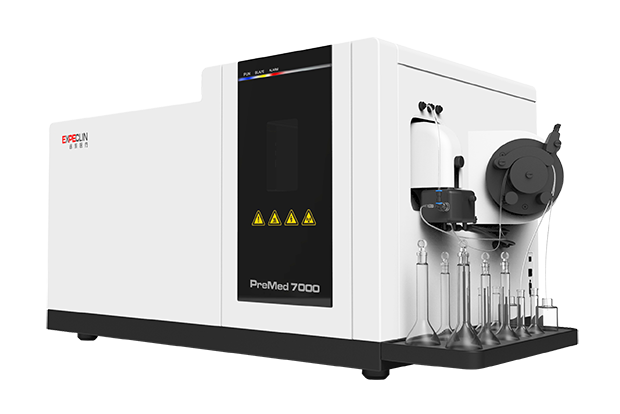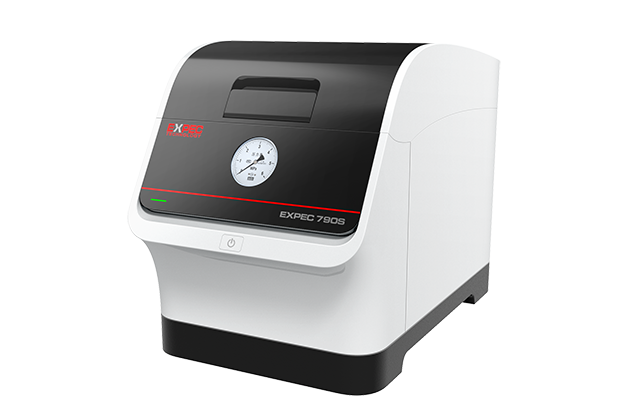Food detergents are mainly used for washing vegetables, fruits and tableware. They are necessary washing products for every household and are directly related to our food health issues . Therefore, the composition safety of detergent itself is also paid attention to by people. Heavy metal elements are a class of harmful ingredients that may be contained in detergents. When people use detergents, heavy metal elements such as cadmium, chromium, lead, mercury, and arsenic can enter the human body through food, drinking water intake, and skin contact. Toxicity to the human body will cause heavy metal poisoning over time, reduce the detoxification function of the liver, and lead to a decline in human immunity. Therefore, it is of great significance to monitor the content of heavy metal elements in detergents.
At present, the common methods of sample pretreatment in food detergents include HNO3-H2SO4 wet digestion method, dry ashing method and microwave digestion method. However, these preprocessing methods have their own defects. The HNO3-H2SO4 wet digestion method requires a large amount of acid and takes a long time to digest; the dry evaporation method will cause the loss of volatile elements (mercury); the conventional microwave digestion method uses a large amount of acid and takes a long time to cool down. Compared with the above methods, the super microwave digestion method has the characteristics of shorter digestion time (without pre-digestion and pretreatment), less acid consumption, shorter cooling time, and less loss of volatile elements.
In this paper, the super microwave digestion method was used to completely digest five kinds of food detergents on the market, and then the contents of cadmium, chromium, lead, mercury and arsenic were tested by inductively coupled plasma mass spectrometry, and the actual samples were tested. Parallel and accurate, it can be used as an analysis method for food detergent samples.
Key words: super microwave, ICPMS, chemical industry, detergent, impurity elements
Experimental part
Instrument
Table 1 Inductively coupled plasma mass spectrometer and super microwave digestion instrument


Table 2 Detection parameters of inductively coupled plasma mass spectrometer

Reagents and Standards
Reagents: superior grade pure nitric acid, 30% hydrogen peroxide.
Pure water: 18.2 MΩ·cm deionized water.
Standard solution: lead, chromium, cadmium, mercury, gold, arsenic standard solution, 1000 μg/mL, National Institute of Nonferrous Metals.
Scientific papers are the record keepers of progress in research. Each year researchers publish millions of papers in more than 30,000 journals. The scientific community measures the quality of those papers in a number of ways, including the perceived quality of the journal (as reflected by the title's impact factor) and the number of citations a specific paper accumulates. The careers of scientists and the reputation of their institutions depend on the number and prestige of the papers they produce, bur even more so on the citations attracted by these papers.
Citation cartels, where journals, authors, and institutions conspire to inflate citation numbers, have existed for a long time. In 2016, researchers developed an algorithm to recognize suspicious citation patterns, including groups of authors that disproportionately cite one another and groups of journals that cite each other frequently to increase the impact factors of their publications. Recently, another expression of this predatory behavior has emerged: so-called support service consultancies that provide language and other editorial support to individual authors and to journals sometimes advise contributors to add a number of citations to their articles.
The advent of electronic publishing and authors' need to find outlets for their papers resulted in thousands of new journals. The birth of predatory journals wasn't far behind. These journals can act as milk cows where every single article in an issue may cite a specific paper or a series of papers. In some instances, there is absolutely no relationship between the content of the article and the citations. The peculiar part is that the journal that the editor is supposedly working for is not profiting at all-it is just providing citations to other journals. Such practices can lead an article to accrue more than 150 citations in the same year that it was published.
How insidious is this type of citation manipulation? In one example, an individual-acting as author, editor, and consultant-was able to use at least 15journals as citation providers to articles published by five scientists at three universities. The problem is rampant in Scopus, a citation database, which includes a high number of the new "international" journals. In fact, a listing in Scopus seems to be a criterion to be targeted in this type of citation manipulation.
Scopus itself has all the data necessary to detect this malpractice. Red flags include a large number of citations to an article within the first year. And for authors who wish to steer clear of citation cartel activities: when an editor, a reviewer, or a support service asks you to add inappropriate references, do not oblige and do report the request to the Journal.
Sample pretreatment
Weigh the food detergent sample into a quartz microwave digestion tube, add a certain amount of ultrapure water, nitric acid, hydrogen peroxide, perchloric acid, shake gently, shake well, cover, and heat according to the microwave heating program in Table 3, after cooling, take out the digestion tube, sonicate in an ultrasonic machine for 5 min, then dilute the digestion solution to 50 mL with deionized water, shake well for later use, and prepare blank and parallel samples in the same way.
Table 3 Super Microwave Heating Program

Table 4 Pictures of samples after digestion

Test Results
Linearity and detection limit: the linear correlation coefficient values of all analytes are greater than 0.9995. Three times the standard deviation of the measured value obtained by continuous analysis of the blank sample for 11 times was used as the detection limit of the instrument.
Precision test: Due to the extremely low content of Cd, Pb, Hg, and As elements, the precision test was performed using the spiked samples of 5 kinds of food detergent samples, and the precision test was performed using 5 kinds of food detergent samples for the remaining elements , the sample was tested 7 times continuously.
Spike recovery rate test: 5 kinds of food detergent samples were tested for spike recovery rate. Based on the parallel samples of 5 kinds of food detergent samples-2, each element was appropriately spiked and tested on the machine according to the corresponding content. The average value of the test results of spiked samples.

Actual sample test
Using the above method to test the actual samples of 5 kinds of food detergents (brand 1, brand 2, brand 3, brand 4, brand 5), the results are shown in Table 5. The analysis data of the 5 kinds of food detergent samples show that the food detergent Cadmium, lead, mercury and arsenic were not detected in the detergent, and the content of chromium was basically less than 0.05 mg/L (national standard)
Table 5 Test results of five kinds of food detergent samples (unit: mg/kg)


Note: Non-detected elements are given "ND".
Epilogue
In this experiment, a super microwave digestion-inductively coupled plasma mass spectrometry method was established to determine the content of five impurity elements in food detergents, such as arsenic, chromium, cadmium, mercury, and lead, and five kinds of food detergents were tested. Determination. From the experimental results, the method has good stability and precision, and can accurately determine the content of impurity elements in food detergents, which shows that the method developed in this paper is effective and feasible.
Appendix
Equipment and Consumables Solutions
1. Configuration details of SUPEC 7000 standard sampling system


3. Reagents and Standards


